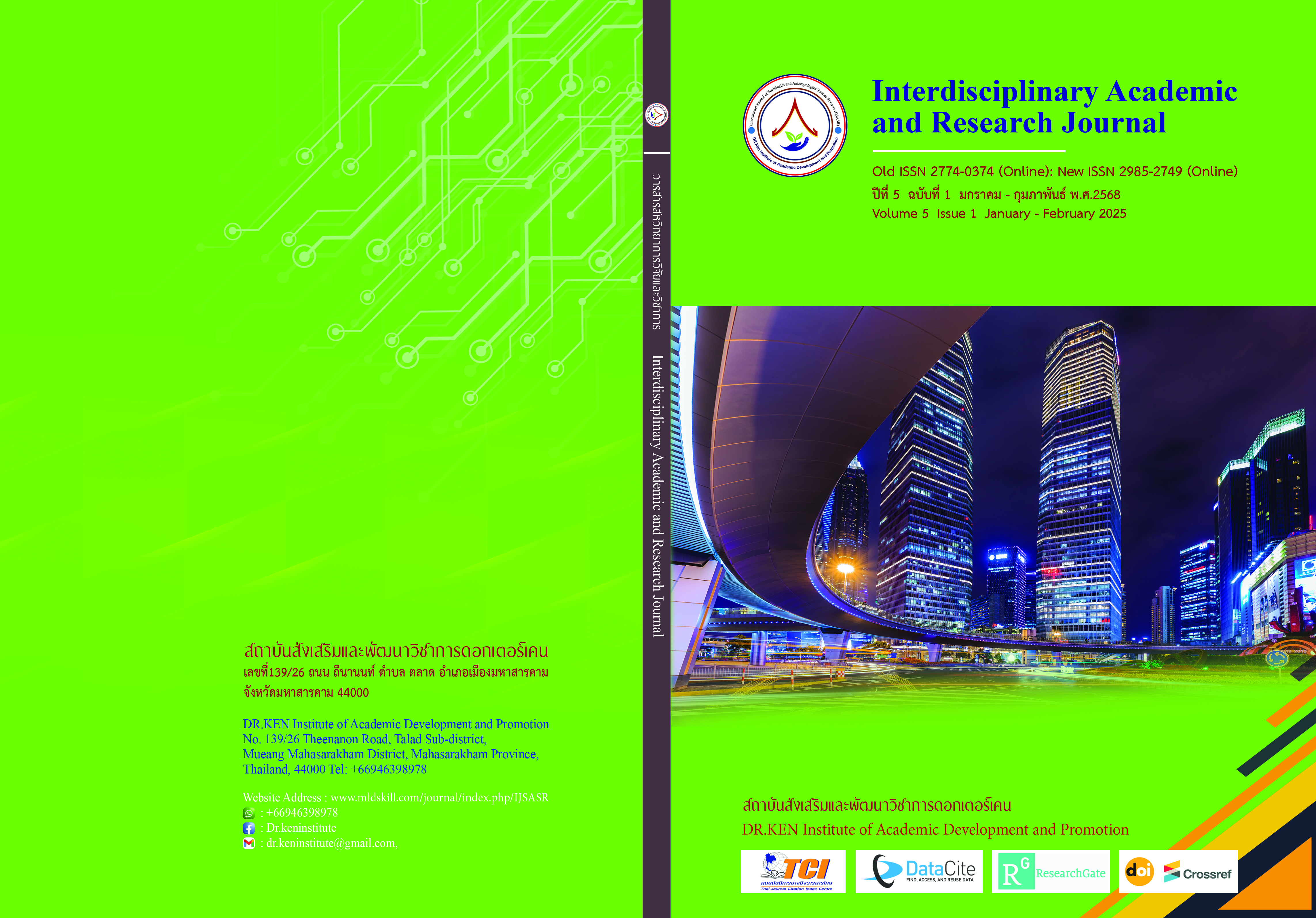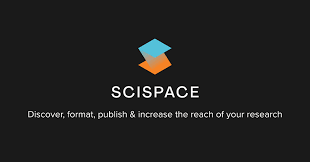Guidelines for Developing Public Mind Behavior of High School Students under MahaSarakham Secondary Educational Service Area Office
DOI:
https://doi.org/10.60027/iarj.2025.280019Keywords:
Development guidelines, Public mind behavior, High school studentsAbstract
Background and Aims: The current crisis regarding the public spirit of youth, especially high school students, reveals that young people are in a state of risk, particularly in various aspects of life. If these risks are not controlled or resolved, they will inevitably have detrimental effects on the future of the youth as valuable human resources of society. Therefore, this research aims to study the public mind behavior of high school students under the MahaSarakham secondary educational service area office. And to study the guidelines for developing the public mind behavior of high school students under the MahaSarakham secondary educational service area office.
Methodology: The research procedures were divided into two phases. The first stage was to study the public mind behavior of high school students, The sample group consisted of 356 individuals, comprising 35 school administrators and 321 teachers, by stratified random sampling based on the size of the educational institutions. The index of consistency ranges between 0.60 and 1.00. The statistics used for data were analyzed by mean, and standard deviation. The second stage was the study of the guidelines for developing the public mind behavior of high school students. The Key informants for studying the guidelines included 6 individuals, and a group of 7 experts was involved in evaluating the guidelines. The tools used in the research were interviews and assessment forms to evaluate the suitability and feasibility of the development guidelines.
Results: 1. The current condition has an overall average at a high level. Ranked from lowest to highest average.: 1) Development through teaching and learning management 2) Development through activities 3)Development through the guidance of parents and community leaders 4) Development through the management of the environment 5) Development through the use of good role models. The guidelines for developing public mind behavior of high school students consist of 11 approaches: 1) Development through the use of good role models (2 approaches) 2)Development through teaching and learning management (2 approaches) 3)Development through the organization of activities (3 approaches) 4) Development through the guidance of parents and community leaders (2 approaches) 5) Development through the management of the environment (2 approaches)
The results of the overall assessment of suitability and feasibility are at the highest level.
Conclusion: Public mind behavior in students is a characteristic that reflects their participation in activities or situations that benefit others, the community, and society, with a willingness and enthusiasm without expecting any reward. Students with public spirit are those who give and help others, share their happiness for the common good, understand and empathize with those in distress, volunteer to assist society, and conserve the environment using their physical and intellectual efforts. They take action to solve problems or contribute to creating positive changes in the community without expecting anything in return.
References
กรรยา พรรณนา. (2559). จิตสาธารณะสร้างได้ง่ายนิดเดียว. กรุงเทพมหานคร: สํานักพิมพ์แห่งจุฬาลงกรณ์มหาวิทยาลัย
ชัยวัฒน์ ถิระพันธุ์. (2562). สอนเด็กให้มีจิตสาธารณะ. กรุงเทพฯ : วี พริ้นท์ 1991.
ชัยวัฒน์ สุทธิรัตน์. (2553). 80 นวัตกรรมการจัดการเรียนรู้ที่เน้นผู้เรียนเป็นสำคัญ. กรุงเทพฯ : แดเน็กซ์ อินเตอร์คอร์ปอเรชัน
ชัยสิทธิ์ เฉลิมมีประเสริฐ. (2560). จิตสำนึกเพื่อโลกที่ดีกว่า. กรุงเทพฯ : โอเดียนสโตร์.
ชาย โพธิ์สิตา. (2560). จิตสาธารณะ. กรุงเทพฯ : อมรปริ๊นติ้ง.
ดวงเดือน พันธุมนาวิน. (2562). ทฤษฎีต้นไม้จรยธรรม : การพัฒนาบุคคล. กรุงเทพฯ : นานมีบุ๊คพับลิเคชั่น.
ธานินทร์ กรัยวิเชียร. (2551). จริยธรรมของผู้ดำรงตำแหน่งทางการเมืองและเจ้าหน้าที่ของรัฐ. กรุงเทพฯ : สำนักงานผู้ตรวจการแผ่นดินฯ.
ธิญดา วงษ์อาชีพ. (2558). การสร้างแบบวัดคุณลักษณะอันพึงประสงค์ด้านมีจิตสาธารณะของนักเรียนชั้นมัธยมศึกษาปีที่ 4-6. ดุษฎีนิพนธ์ศึกษาศาสตรดุษฎีบัณฑิต: มหาวิทยาลัยเกษตรศาสตร์.
นวลทา จินดาสุ. (2550). รายงานการวิจัยเรื่องจิตสาธารณะของนักเรียน. รายงานการวิจัย โรงเรียนบ้านปงท่าข้าม อำเภอสูงเม่น จังหวัดแพร่.
บุญชม ศรีสะอาด. (2556). การวิจัยเบื้องต้น. พิมพ์ครั้งที่ 9. กรุงเทพฯ : สุวีริยาสาส์น.
ปัญญา รุ่งเรือง. (2562). จิตสาธารณะ: แนวคิดพื้นฐานและการจัดการเรียนรู้เพื่อพัฒนาและปลูกฝังจิตสาธารณะให้แก่ผู้เรียน. งานประชุมวิชาการระดับชาติ ครั้งที่ 11 มหาวิทยาลัยราชภัฏนครปฐม 12 กรกฎาคม 2562.
ปิยลักษณ์ พฤกษะวัน. (2554). การศึกษาองค์ประกอบและพัฒนาจิตสาธารณะของเด็กปฐมวัยด้วยแนวทางการเรียนการสอน MADE. ดุษฎีนิพนธ์การศึกษาดุษฎีบัณฑิต: มหาวิทยาลัยศรีนครินทรวิโรฒ.
ลัดดาวัลย์ เกษมเนตร. (2562). การพัฒนานักเรียนระดับประถมศึกษาให้มีจิตสาธารณะ. กรุงเทพฯ : มหาวิทยาลัยศรีนครินทรวิโรฒ.
สมศรี ฐานะวุฒิกุล, ฉลอง ชาตรูประชีวิน, วิทยา จันทร์ศิลา, อนุชา กอนพ่วง. (2556). กลยุทธ์การพัฒนาจิตสาธารณะของนักเรียนในสถานศึกษาขั้นพื้นฐาน ระดับปฐมศึกษา. วารสารศึกษาศาสตร์มหาวิทยาลัยนเรศวร, 15(2), 45-57
สำนักวิชาการและมาตรฐานการศึกษา. (2554). แนวทางการจัดกิจกรรมการเรียนรู้แบบบูรณาการ. กรุงเทพฯ : โรงพิมพ์ชุมนุมสหกรณ์การเกษตรแห่งประเทศไทย.
อาจอง ชุมสาย ณ อยุธยา. (2553). คุณธรรมนำความรู้. กรุงเทพฯ : ฟรีมายด์
Cronbach, L.J. (1970). Essentials of Psychological Testing. 3rd edition. New York: Harper and Row.
Krejcie, R. V. & Morgan, D. W. (1970). Determining Sample Size for Research Activities. Educational and Psychological Measurement, 30, 607-610. DOI: https://doi.org/10.1177/001316447003000308
Downloads
Published
How to Cite
Issue
Section
License
Copyright (c) 2025 Interdisciplinary Academic and Research Journal

This work is licensed under a Creative Commons Attribution-NonCommercial-NoDerivatives 4.0 International License.
Copyright on any article in the Interdisciplinary Academic and Research Journal is retained by the author(s) under the under the Creative Commons Attribution-NonCommercial-NoDerivatives 4.0 International License. Permission to use text, content, images, etc. of publication. Any user to read, download, copy, distribute, print, search, or link to the full texts of articles, crawl them for indexing, pass them as data to software, or use them for any other lawful purpose. But do not use it for commercial use or with the intent to benefit any business.
















.png)


